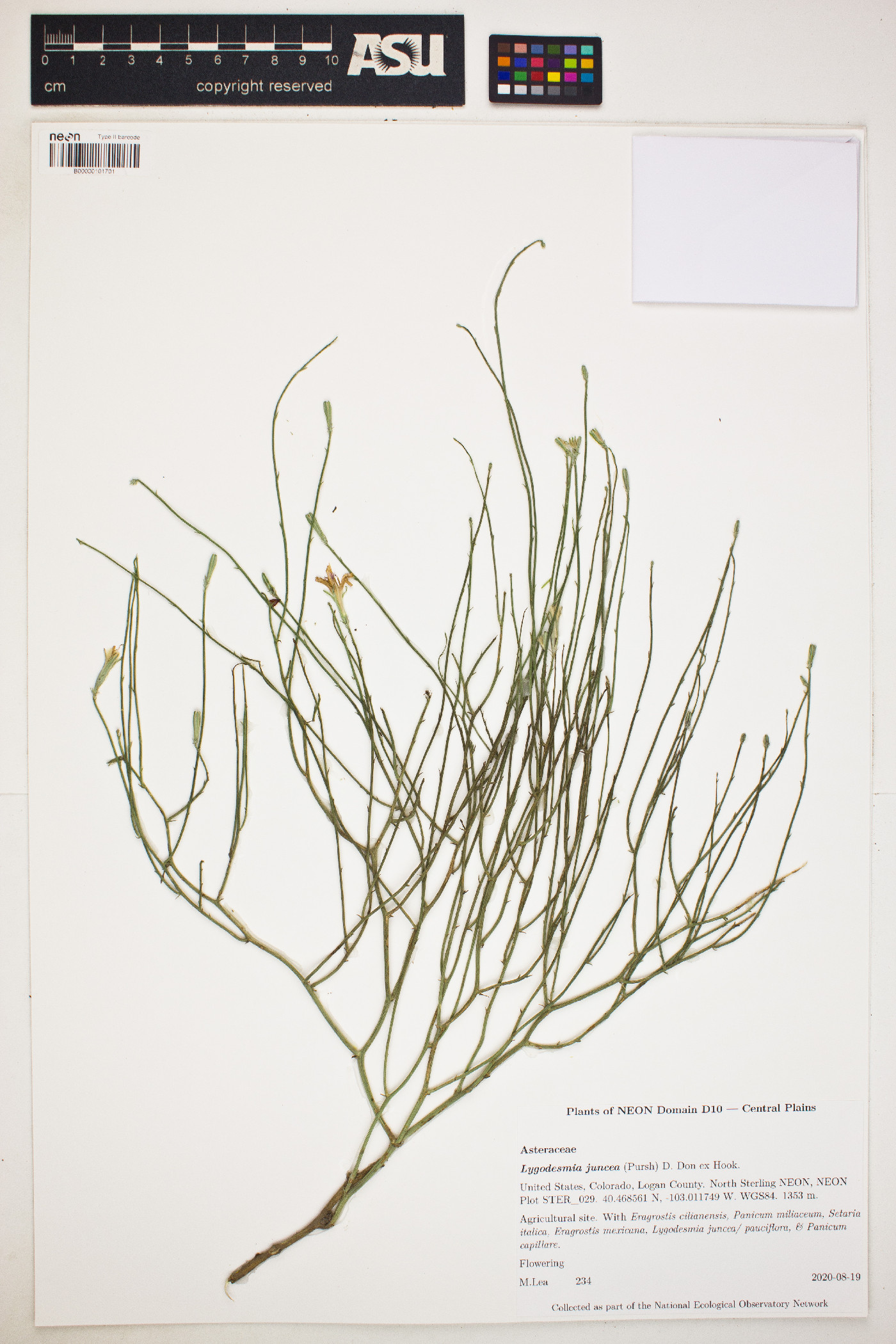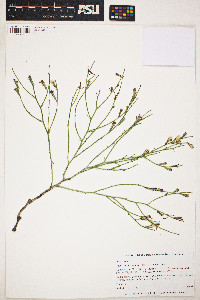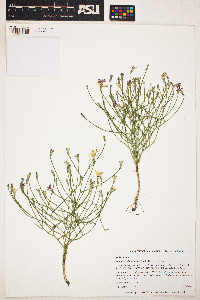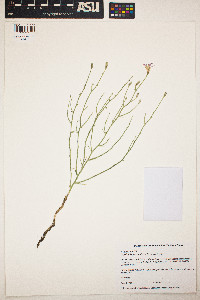|
|
|
|
Family: Asteraceae
rush skeletonplant
[Lygodesmia juncea/Stephanomeria pauciflora] |
Perennials, 10-35(-70) cm (in bushy clumps); taproots deep, vertical, rhizomes branched, woody. Stems erect to ascending or decumbent, green, glaucous, much branched from bases and distally, strongly striate, glabrous (often bearing round galls). Leaves (basal not in rosettes, absent at flowering); proximal blades linear, 5-30(-60) × 1-2(-4) mm, margins entire, apices acute, faces glabrous; cauline reduced to subulate scales. Heads (1-50+) borne singly or in corymbiform arrays. Involucres cylindric, 10-16 × 4-6 mm, apices spreading. Calyculi of 8, ovate to linear bractlets 2-4 mm, margins erose-ciliate (faces glabrous). Phyllaries 5(-7), linear, 10-15 mm, margins scarious, apices acute or obtuse, not appendaged, faces glabrous . Florets usually 5; corollas usually light pink to lavender, rarely white, 18-20 mm, ligules 3-4 mm wide. Cypselae 6-10 mm, weakly striate, glabrous ; pappi 6-9 mm. 2n = 18. Flowering Jun-Sep. High Plains, rolling short-grass prairies, blufftop prairies, loess hills, sandy to silty soils, disturbed sites, railroads, roadsides, barren areas; 600-2300 m; Alta., B.C., Man., Sask.; Ariz., Ark., Colo., Idaho, Ind., Iowa, Kans., Minn., Mo., Mont., Nebr., Nev., N.Mex., N.Dak., Okla., S.Dak., Tex., Utah, Wash., Wis., Wyo. Lygodesmia juncea is the most widespread species of the genus, occurring throughout the High Plains region of North America. It is easily distinguished by its bushy habit, greatly reduced cauline leaves, relatively small heads and involucres, and phyllaries lacking appendages. Mature cypselae are rarely found on this species, and the plants are presumably sterile and reproduce mainly by vegetative means. Many specimens have round galls to 10 mm diameter on the stems, produced by solitary wasps and apparently unique to this species.
Glabrous colonial perennial from deep- seated creeping roots; stem 1.5-6 dm, grooved-striate, much branched; lvs all alternate, linear, to 4 cm נ3 mm, the upper reduced to subulate scales; heads terminating the branches; invol 10-16 mm, with 4-8 (chiefly 5) principal bracts; fls (4)5(-10), the ligule pink (white), spreading, mostly 10-12 נ4 mm; achenes columnar, several-nerved; 2n=18. Prairies and other dry, open places, often in sandy soil; Minn. to Ark., w. to Man., B.C., and Ariz. June-Sept. Gleason, Henry A. & Cronquist, Arthur J. 1991. Manual of vascular plants of northeastern United States and adjacent Canada. lxxv + 910 pp. ©The New York Botanical Garden. All rights reserved. Used by permission. |





